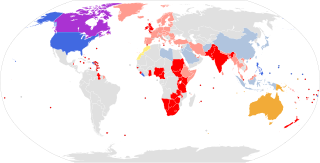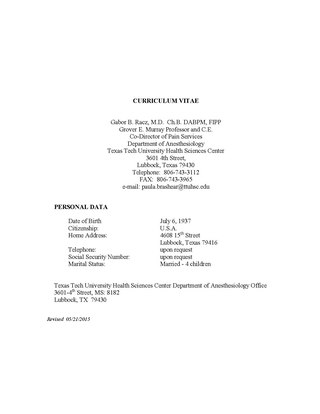Related Research Articles
Jargon or technical language is the specialized terminology associated with a particular field or area of activity. Jargon is normally employed in a particular communicative context and may not be well understood outside that context. The context is usually a particular occupation, but any ingroup can have jargon. The key characteristic that distinguishes jargon from the rest of a language is its specialized vocabulary, which includes terms and definitions of words that are unique to the context, and terms used in a narrower and more exact sense than when used in colloquial language. This can lead outgroups to misunderstand communication attempts. Jargon is sometimes understood as a form of technical slang and then distinguished from the official terminology used in a particular field of activity.
The slash is the oblique slanting line punctuation mark /. It is also known as a stroke, a solidus, a forward slash and several other historical or technical names. Once used to mark periods and commas, the slash is now used to represent division and fractions, exclusive 'or' and inclusive 'or', and as a date separator.
Caveat emptor is Latin for "Let the buyer beware". It has become a proverb in English. Generally, caveat emptor is the contract law principle that controls the sale of real property after the date of closing, but may also apply to sales of other goods. The phrase caveat emptor and its use as a disclaimer of warranties arises from the fact that buyers typically have less information than the seller about the good or service they are purchasing. This quality of the situation is known as 'information asymmetry'. Defects in the good or service may be hidden from the buyer, and only known to the seller.
CQ may refer to:

Intimidation is a behaviour and legal wrong which usually involves deterring or coercing an individual by threat of violence. It is in various jurisdictions a crime and a civil wrong (tort). Intimidation is similar to menacing, coercion, terrorizing and assault in the traditional sense.
Many languages have words expressing indefinite and fictitious numbers—inexact terms of indefinite size, used for comic effect, for exaggeration, as placeholder names, or when precision is unnecessary or undesirable. One technical term for such words is "non-numerical vague quantifier". Such words designed to indicate large quantities can be called "indefinite hyperbolic numerals".

Despite the various English dialects spoken from country to country and within different regions of the same country, there are only slight regional variations in English orthography, the two most notable variations being British and American spelling. Many of the differences between American and British/Commonwealth English date back to a time before spelling standards were developed. For instance, some spellings seen as "American" today were once commonly used in Britain, and some spellings seen as "British" were once commonly used in the United States.
The Latin adverb sic inserted after a quoted word or passage indicates that the quoted matter has been transcribed or translated exactly as found in the source text, complete with any erroneous, archaic, or otherwise nonstandard spelling, punctuation, or grammar. It also applies to any surprising assertion, faulty reasoning, or other matter that might be interpreted as an error of transcription.
A non sequitur is a conversational literary device, often used for comedic purposes. It is something said that, because of its apparent lack of meaning relative to what preceded it, seems absurd to the point of being humorous or confusing. This use of the term is distinct from the non sequitur in logic, where it is a fallacy.

A page is one side of a leaf of paper, parchment or other material in a book, magazine, newspaper, or other collection of sheets, on which text or illustrations can be printed, written or drawn, to create documents. It can be used as a measure of communicating general quantity of information or more specific quantity.
idem is a Latin term meaning "the same". It is commonly abbreviated as id., which is particularly used in legal citations to denote the previously cited source. It is also used in academic citations to replace the name of a repeated author.
Vetting is the process of performing a background check on someone before offering them employment, conferring an award, or doing fact-checking prior to making any decision. In addition, in intelligence gathering, assets are vetted to determine their usefulness.
The ditto mark is a shorthand sign, used mostly in hand-written text, indicating that the words or figures above it are to be repeated.

A threat is a communication of intent to inflict harm or loss on another person. Intimidation is a tactic used between conflicting parties to make the other timid or psychologically insecure for coercion or control. The act of intimidation for coercion is considered as a threat.
An X mark is used to indicate the concept of negation as well as an indicator. Its opposite is often considered to be the O mark used in Japan and Korea or the check mark used in the West. In Japanese, the X mark (❌) is called "batsu" (ばつ) and can be expressed by someone by crossing their arms.

In English, a curriculum vitae is a short written summary of a person's career, qualifications, and education. This is the most common usage in British English. In North America, the term résumé is used, referring to a short career summary.
References
- ↑ http://www.brighthubeducation.com/learning-translating-latin/41739-translations-of-latin-legal-terms/ Translating Latin Legal Terms: Animus Nocendi and Cadit Quaestio
- ↑ http://www.merriam-webster.com/dictionary/cadit%20quaestio Merriam-Webster Dictionary - cadit quaestio
- ↑ http://definitions.uslegal.com/c/cadit-quaestio/ USlegal.com - Definitions: cadit quaestio
- ↑ "The Phillips Code (part 2 of 3)" . Retrieved 11 April 2018.
- ↑ "Language Log: Hed, dek, lede, graf, tk: Live with it".
- ↑ http://sues-news.com/2010/03/21/holy-chihuly-somebody-found-what-cq-means/ Sue's News
- ↑ "Guidelines for Freelance Writers". Los Angeles Times. Archived from the original on 11 April 2018. Retrieved 11 April 2018.